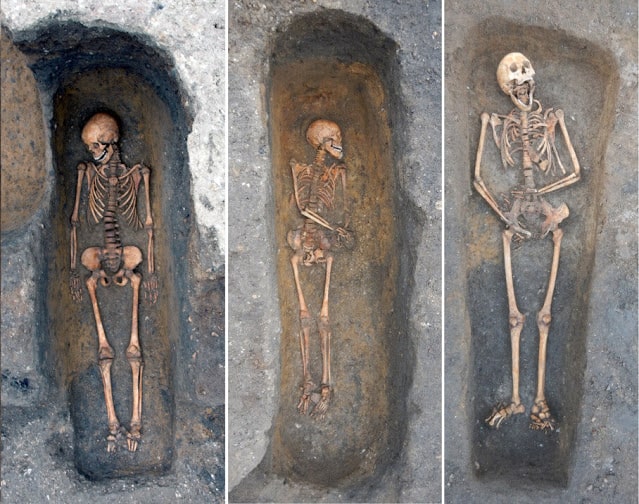The Black Death, an infamous epidemic that swept through Europe in the mid-14th century, remains one of history’s most devastating events, claiming an estimated 40 to 60% of the continent’s population. Its impact reverberated for centuries through subsequent waves of plague outbreaks, leaving a mark on societies and shaping historical narratives. While the Black Death’s toll is well-documented in historical records, recent archaeological discoveries have shed new light on how communities coped with the catastrophe.
Traditionally, identifying Black Death victims in archaeological findings posed challenges due to the rapid and often complete decay of soft tissues, leaving no visible traces of the disease on skeletal remains. This limitation hindered efforts to discern individual victims from other burials unless they were interred in mass graves, a common practice during pandemics to manage large numbers of casualties efficiently.
However, advancements in DNA analysis and archaeological techniques have revolutionized our ability to uncover the hidden stories of the Black Death era. Researchers from the After the Plague project, based at the University of Cambridge’s Department of Archaeology, embarked on a groundbreaking investigation to detect the presence of Yersinia Pestis, the bacterium responsible for the plague, in ancient remains.

Their study focused on analyzing dental DNA from individuals buried during the Black Death period, including those in individual burials at a parish cemetery and a friary in Cambridge, as well as victims interred in mass graves in the nearby village of Clopton. The findings revealed compelling evidence of Yersinia Pestis in several individuals, providing a direct link to the Black Death pandemic.
One significant discovery was the identification of plague victims buried in individual graves, challenging the assumption that most victims were interred in mass burials. For instance, parishioners from St Benet’s in Cambridge, buried together in a large trench, exhibited traces of the plague bacterium, offering insights into burial practices during the epidemic. Additionally, individual burials within the chapter house of the friary showcased a level of care and reverence even amidst the turmoil of the pandemic.
Lead author Craig Cessford emphasized the significance of these findings, noting the meticulousness with which some individuals were laid to rest during the Black Death. The careful burial practices observed, such as those at the friary and All Saints by the Castle in Cambridge, highlight the resilience and humanity exhibited by communities grappling with a catastrophic public health crisis.
The study’s revelations extend beyond mere identification, enriching our understanding of how past societies navigated pandemics. Despite the chaos and devastation wrought by the Black Death, the act of individual burials with care and respect underscores the enduring human endeavor to honor the deceased amidst adversity.
The study is published in the European Journal of Archaeology.
